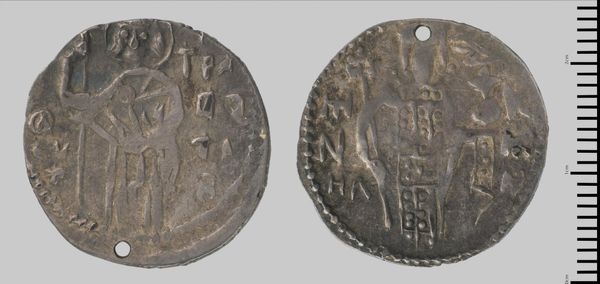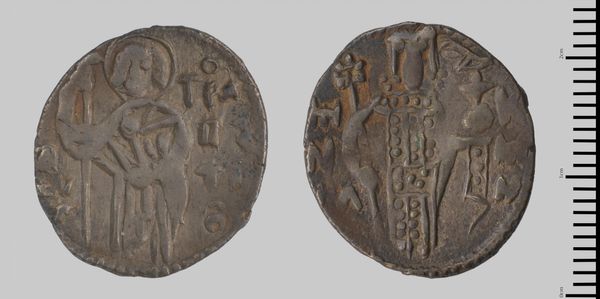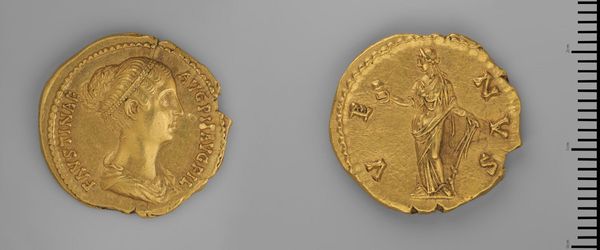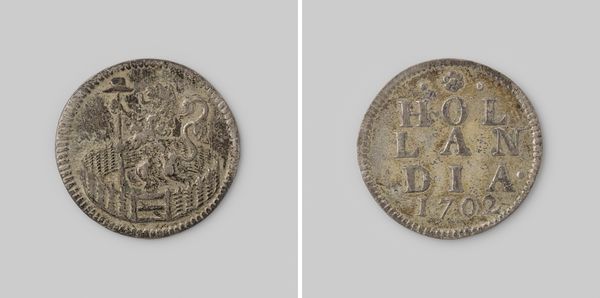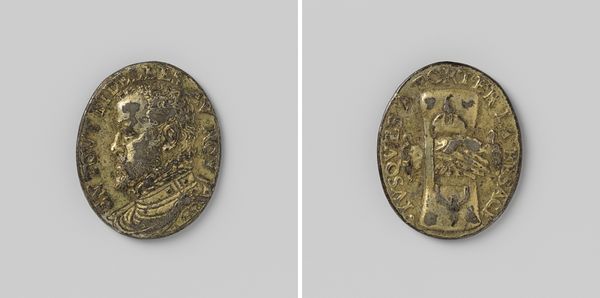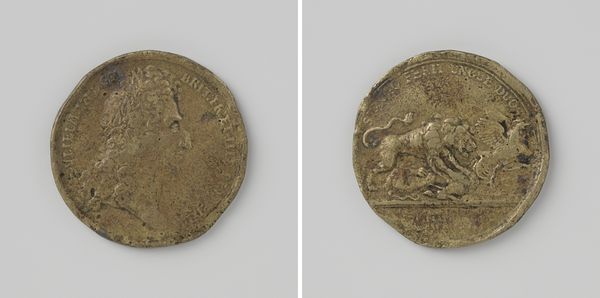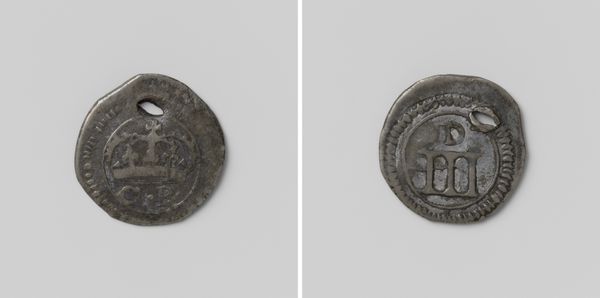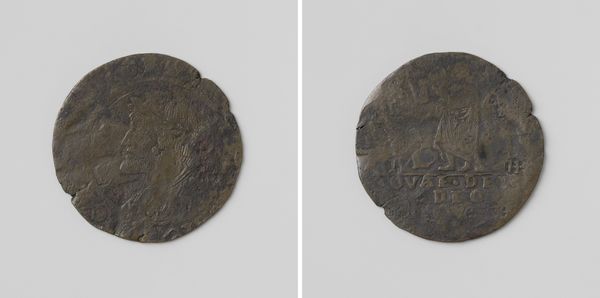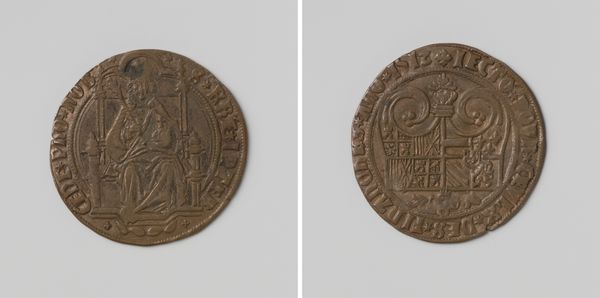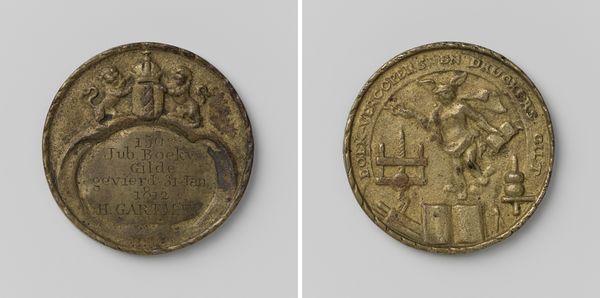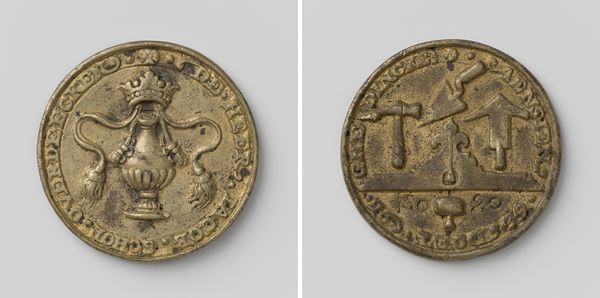
Light weight solidus (23 siliquae) of Maurice Tiberius, Constantinople c. 583 - 601
Dimensions: 4.22 g
Copyright: CC0 1.0
This light weight solidus, equivalent to 23 siliquae, was struck in Constantinople under the authority of Maurice Tiberius. Gold, a material prized for its luster, malleability, and resistance to corrosion, was the material of choice for coinage, linking the physical properties of the material to the symbolic power of money. The minting of coins in this era was a highly controlled process, involving skilled artisans, the precious metal was carefully weighed, melted, and struck with dies to create standardized units of currency. Here, the incuse designs of the emperor's portrait and the depiction of Christ are not just images; they are also evidence of a sophisticated metallurgical process and a complex system of economic exchange. The very act of striking a coin like this one was a political statement. It was a method by which the emperor’s authority and image were disseminated throughout the realm. The solidus serves as a reminder of how materials, making, and social context intertwine to shape our understanding of art and value.
Comments
No comments
Be the first to comment and join the conversation on the ultimate creative platform.
